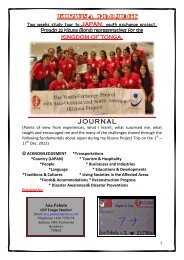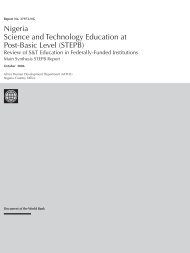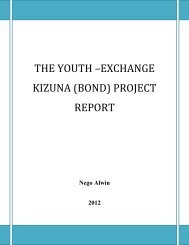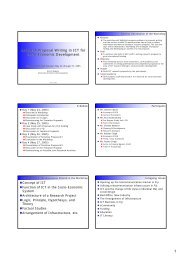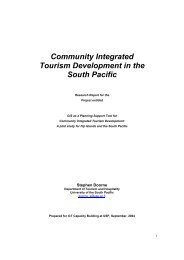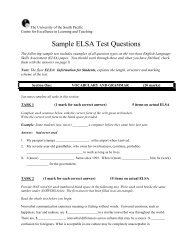Korea as a Knowledge Economy - ISBN: 9780821372012
Korea as a Knowledge Economy - ISBN: 9780821372012
Korea as a Knowledge Economy - ISBN: 9780821372012
Create successful ePaper yourself
Turn your PDF publications into a flip-book with our unique Google optimized e-Paper software.
72 <strong>Korea</strong> <strong>as</strong> a <strong>Knowledge</strong> <strong>Economy</strong><br />
business opportunities by developments in the IT industry, the start of the KOS-<br />
DAQ market, and the <strong>Korea</strong>n government’s policies, which nurtured venture businesses<br />
during the years of restructuring after the financial crisis.<br />
The financial crisis w<strong>as</strong> a painful dis<strong>as</strong>ter, but the crisis became a turning point<br />
for the venture business industry. In fact, venture businesses, <strong>as</strong> well <strong>as</strong> large<br />
firms, had a lot of difficulties <strong>as</strong> a result of the overall economic restructuring and<br />
depression following the financial crisis. However, in late 1998, <strong>as</strong> soon <strong>as</strong> interest<br />
rates and exchange rates went down and were more stable and the real sector<br />
started to recover, many funds in the market flowed into the stock markets with<br />
the expectation of rapid economic recovery. Attracted by new technology–b<strong>as</strong>ed<br />
industries, many investors traded on the KOSDAQ market rather than the KSE,<br />
which w<strong>as</strong> oriented to the traditional industries in which the restructuring<br />
process h<strong>as</strong> continued.<br />
Adjustment of the Venture Boom<br />
A dark outlook for venture businesses loomed in 2000. With the cr<strong>as</strong>h in NAS-<br />
DAQ, the stock prices of venture businesses in KOSDAQ also began to fall<br />
steadily. To make matters worse, the illegal activities of some venture businesses’<br />
chief executives and venture capitalists, along with unfair trading practices in<br />
KOSDAQ, led to the KOSDAQ index falling dr<strong>as</strong>tically. The market for initial<br />
public offerings w<strong>as</strong> depressed, and many venture businesses had difficulty getting<br />
financing through the stock market. Furthermore, this depressed venture<br />
capital market constrained the additional financing of venture businesses in need.<br />
This dr<strong>as</strong>tic depression w<strong>as</strong> fundamentally due to the excessive valuation<br />
and myopic overinvestment in venture businesses. The excessive inflow of<br />
funds and high expectations held by investors (without systematic consideration<br />
of the businesses’ profitability) pushed the stock market into a bubble. The<br />
<strong>Korea</strong>n government’s excessive intervention also made it more serious.<br />
Although the new market and technological opportunities had emerged from<br />
the rapid IT development, the competence of the venture businesses and venture<br />
capital firms did not improve significantly within that short time. Thus,<br />
investments in the stock market expanded too quickly for the promising new<br />
technology–b<strong>as</strong>ed venture businesses to grow. However, even though many<br />
had warned about the risks involved in the venture investment fund, the government’s<br />
excessive intervention in the markets helped expand the bubble.<br />
After the bubble burst in 2000, <strong>Korea</strong>’s venture industry underwent an adjustment<br />
period, <strong>as</strong> shown in table 4.5. Since 2001, the number of firms decre<strong>as</strong>ed or<br />
stabilized, operating income stagnated, and total liabilities decre<strong>as</strong>ed and then<br />
slightly incre<strong>as</strong>ed. However, since 2003, the mood of the markets related to venture<br />
businesses h<strong>as</strong> become more optimistic. The required investigation of listings<br />
in KOSDAQ w<strong>as</strong> enforced, and investments were made only in businesses<br />
b<strong>as</strong>ed on concrete profit models.<br />
Generally, fluctuation in the stock market can be viewed <strong>as</strong> a natural phenomenon.<br />
The adjustment process is therefore a stage during which the market restores<br />
its original function. In the long run, this adjustment will get rid of obstacles to the<br />
development of venture-related markets (venture business market, venture capital



